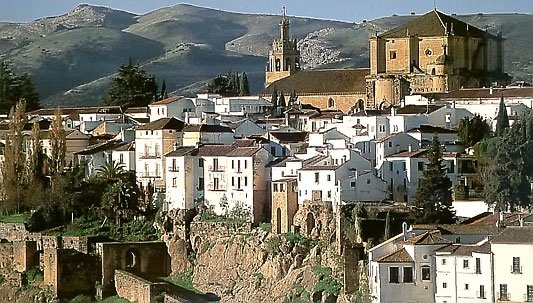 RONDA IS TOP BLACK SPOT FOR ILLEGAL WILDLIFE POISONING
RONDA IS TOP BLACK SPOT FOR ILLEGAL WILDLIFE POISONINGBy David Eade
The Andalucía government considers that the Serranía de Ronda along with the Doñana national park are the two major black spots in the region for the illegal killing of wildlife with poisoned bait.
The practice is in defiance of the law that protects flora and fauna in Andalucía. It comes at a time when the regional government is vigorously tracking down and prosecuting the perpetrators and carrying out a publicity campaign against the use of illegal poison bait to kill wildlife.
Indeed in the past decade action has been taken against farmers and hunters in the Serranía who have been caught using this bait in the countryside. In some cases the punishment has included jail sentences.
The office of the Ministry of the environment in Ronda in the last year issued 12 summonses against those caught employing poison and another five cases are in the process of being decided on.
Ronda’s delegate for the environment, Alberto Orozco, stated that the area’s listing as a black spot did not necessarily mean the use of poisoned bait was more prevalent in the Serranía. However it did reflect the fact that the authorities in the zone were taking tough action and bringing those caught before the courts.
The principal victims of the poisoned bait are foxes, mongooses, vultures, owls, eagles, ferrets and dogs. These are the birds and animals that frequent the zones where the meat bait is laid laced with poison and who are naturally drawn to such deadly offerings.
The investigations in to the use of this poisoned bait are carried out by the ministry of the environment, Ronda’s Patrol Verde and Seprona – the environmental arm of the Guardia Civil. They use specially trained dogs to find the bait.
In many cases the poison is laid by farmers to protect their livestock from attack by groups of wild dogs. In addition hunters are known to lay this bait at the end of the season. The intention is that it will be eaten by their unwanted dogs and cruelly kill them in the process. Of course the indiscriminate use of this deadly poison can also have the tragic effect of being eaten by unsuspecting children.
SOCIALIST MEETING…
Now that the mayor of Ronda, Antonio Marín, and his fellow Partido Andalucista councillors have quit the party they sit as non-aligned alongside their PSOE coalition partners. In time they will be absorbed in to the socialists so held a meeting last week at the PSOE HQ. Marín emerged with additional key responsibility for finances whilst former PA councillor Rafael Lara assumes economy.
… BUT NO SWITCHING
The national MP for the Partido Popular, Juan José Matari, has complained before the Mesa Antitransfuguismo in Parliament against the actions of the Partido Andalucista mayor of Ronda and his eight councillors in leaving the party, sitting as non-aligned before joining the socialists. The PA is demanding that its former members resign their posts as residents who voted for them now have no representatives.
BAD NEWS
An 81-year-old woman was killed in Ronda after having been hit by a van delivering newspapers on Thursday at 9.00 off the Plaza de la Virgen de la Esperanza. The woman suffered a heart attack and died at the scene – the local police and ambulance service couldn’t save her. The driver has been charged with manslaughter and the courts will determine his guilt.
FORTY DAYS
Ronda has published its special plan for its historic quarter which is open for inspection by the public for 40 days. An office on the lower floor of the town hall has been assigned to the project and will be open Monday to Friday from 10.00 to 14.00. Officials will be on hand to explain the proposals, answer questions and help with submissions.
JOB OPPORTUNITIES
Sixty-eight people in Cuevas del Becerro will be employed in the coming weeks on projects created by the town hall to fight the effects of the economic crisis. Nearly 610,000 euros will be allocated to various infrastructure schemes in the village including sanitation and the construction of a municipal garden centre. Mayor Joaquín Esquina said they were of special importance for the municipality.
DIGITAL X-RAYS
The emergency department at the Hospital de la Serranía has switched to a digital format for x-rays. This will save time in developing the 3,500 x-rays taken every month. It will enable doctors to immediately see the results on their computer screens. Over 175,000 euros has been invested in the technology which will also make the results available to monitors in health centres.

